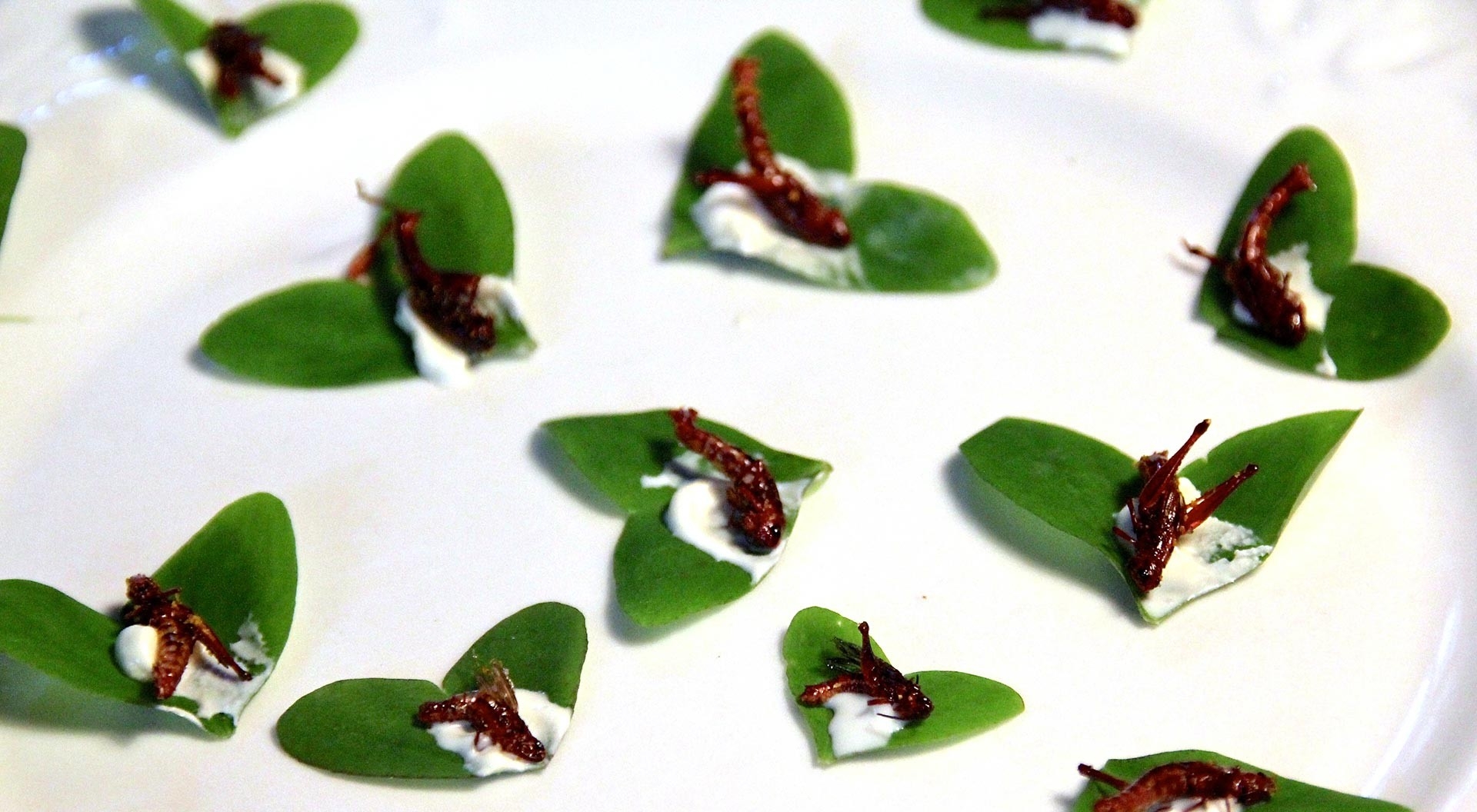Repeated exposure and visibility, often in the form of celebrity endorsements, are big incentives to trying bugs, though your circle of friends is likely to have a bigger impact. When potluck dinners were something people did before the COVID-19 pandemic, Shine, for example, would make cricket brittle for friends to try.
Cricket rearing has low environmental impact and doesn’t take much space, but does require a vast crew of humans. “While it’s sure that pound for pound, crickets consume a lot less water and grain than cattle, it’s not sure how they compare to vegetarian choices, or even to chicken,” Shine says. “From an accessibility point of view, they’d be better positioned as an alternative to nuts — but then the environmental benefit is less clear.”
Insects could be useful as animal fodder. Shine explains that salmon feed, which mostly — and unsustainably — consists of smaller fish, could be replaced by black soldier fly meal. And because some bugs eat discards, a thriving insect industry could upcycle food waste.
But, Shine cautions, “if bugs are mass-reared in industrial facilities, they will probably turn into yet another food prone to disease, like most monoculture products are. I’m not sure that’s very tempting.”
 “From an accessibility point of view, [insects] are better positioned as an alternative to nuts — but then the environmental benefit is less clear.”
“From an accessibility point of view, [insects] are better positioned as an alternative to nuts — but then the environmental benefit is less clear.”
